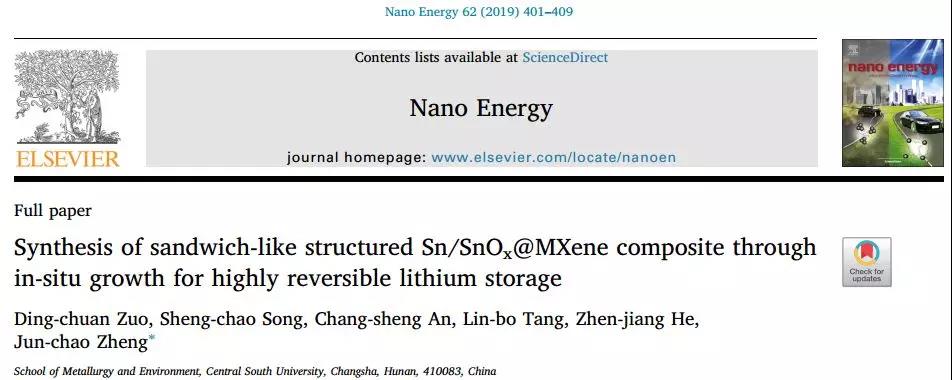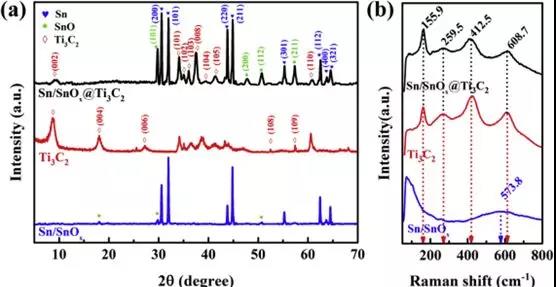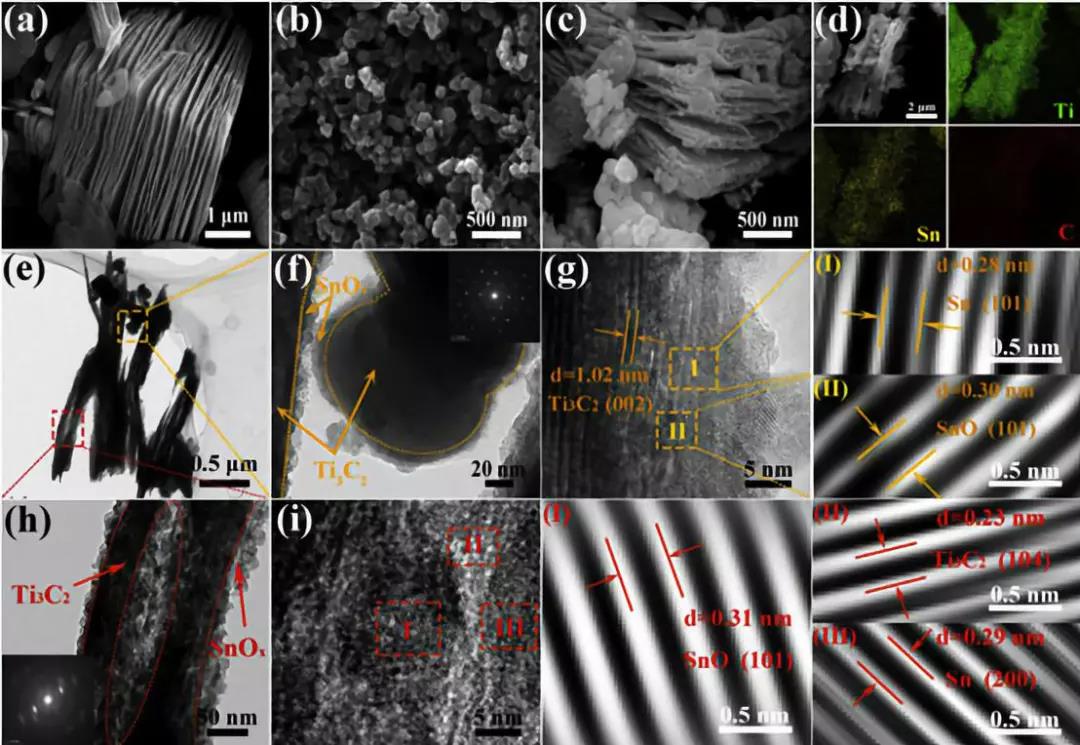
hotline:
17715390137
Tel/Wechat:
18101240246 (Technology)
0512-68565571
Email:mxenes@163.com (Sales Engineer)bkxc.bonnie@gmail.com
Scan the code to follow or search the official account on WeChat:
2D Materials Fronrier After paying attention,
click on the lower right corner to contact us,
Enter enterprise WeChat.
Professional Services Online


【Research Background】
In order to meet the ever-increasing energy storage needs, there is a high degree of research enthusiasm for new materials with high energy and power density, low cost and environmental friendliness. Among the many alternative materials, tin-tin and tin-based materials are among the most promising lithium-ion anode materials, with a theoretical capacity of 944 mAh g-1. However, the defects of tin materials are also obvious, such as strong volume expansion of more than 300%, agglomeration, poor conductivity during lithium insertion and delithiation, accompanied by polarization, powdering and rapid collapse of electrode materials. , in turn, a large capacity reduction. There are many strategies that can be used to improve the performance of tin-based materials, such as nanocrystals for the preparation of tin particles, alloying with other transition metals, and preparation of tin/carbon composites. Among them, tin-based materials and carbon materials are more practical because they can limit volume change and improve conductivity.
[Introduction]
Recently, Professor Zheng Junchao of the Central South University published a paper in the internationally renowned academic journal Nano Energy entitled Synthesis of sandwich-like structured Sn/SnOx @MXene composite through in-situ growth for highly reversible lithium storage. A composite of Sn/SnOx nanoparticles grown in situ between two-dimensional MXene (Ti3C2Tx) layers by simple electrostatic attraction and liquid phase reduction is reported. Physical characterization indicates that Sn/SnOx nanoparticles are uniformly distributed in the MXene layer. In between, form a sandwich structure. MXene‘s multilayer structure effectively limits the volume expansion and agglomeration of Sn/SnOx particles, accelerating the transfer of lithium ions and electrons. At the same time, it also effectively limits the re-deposition of the nanosheet during the lithium ion intercalation and deintercalation process, and has a reversible capacity of 594.2 mAh g-1 after 200 charge and discharge cycles. The synergistic effect of the two gives the composite excellent electrochemical properties.
[Graphic introduction]

Figure 1. Synthetic route of Sn/SnOx@Ti3C2 and in situ reduction growth mechanism

图2. Sn/SnOx, Ti3C2, Sn/SnOx@Ti3C2的XRD和拉曼图谱。

Figure 3. SEM image of Sn/SnOx, Ti3C2, Sn/SnOx@Ti3C2; element distribution of Sn/SnOx@Ti3C2; TEM of Sn/SnOx@Ti3C2, HRTEM and Fourier transformed image.
Reaction equation:
SnO2 +4Li++4e- → Sn +2Li2O
SnO+2Li ++2e-→ Sn +Li2O
Sn+ xLi++xe-↔ LixSn
Ti3C2+xLi++xe- ↔ LixTi3C2

Figure 4. XPS spectra of Sn/SnOx, Ti3C2, Sn/SnOx@Ti3C2; Ti 2p, O 1s and Sn 3d peaks of Ti3C2 and Sn/SnOx@Ti3C2.

Figure 5. Electrochemical performance testing of Sn/SnOx, Ti3C2, Sn/SnOx@Ti3C2.

Figure 6. Electrochemical performance testing of Sn/SnOx, Ti3C2, Sn/SnOx@Ti3C2.

Figure 7. Comparative SEM of Sn/SnOx, before and after the 100 charge and discharge cycles of the Sn/SnOx@Ti3C2 electrode.
[Summary of this article]
In this study, Sn/SnOx nanoparticles were grown in situ between MXene nanosheets by simple electrostatic adsorption and liquid phase reduction. The synergistic effect of the two methods greatly improved the conductivity, structural stability and ions in the electrochemical reaction. The spread of the two combines the advantages of both. On the one hand, MXene nanosheets, as a conductive skeleton, accelerate the transfer of electrons and ions while preventing the aggregation and volume expansion of Sn/SnOx nanoparticles. On the other hand, Sn/SnOx nanoparticles can effectively reduce the heavy accumulation of MXene nanosheets during the insertion and extraction of lithium ions. The composite electrode has ultra-high rate performance and cycle performance, and is the most potential anode material for next-generation lithium-ion batteries.
Literature link:
https://doi.org/10.1016/j.nanoen.2019.05.062
Source: WeChat public number

| Reminder: Beijing Beike New Material Technology Co., Ltd. supplies products only for scientific research, not for humans |
| All rights reserved © 2019 beijing beike new material Technology Co., Ltd 京ICP备16054715-2号 |